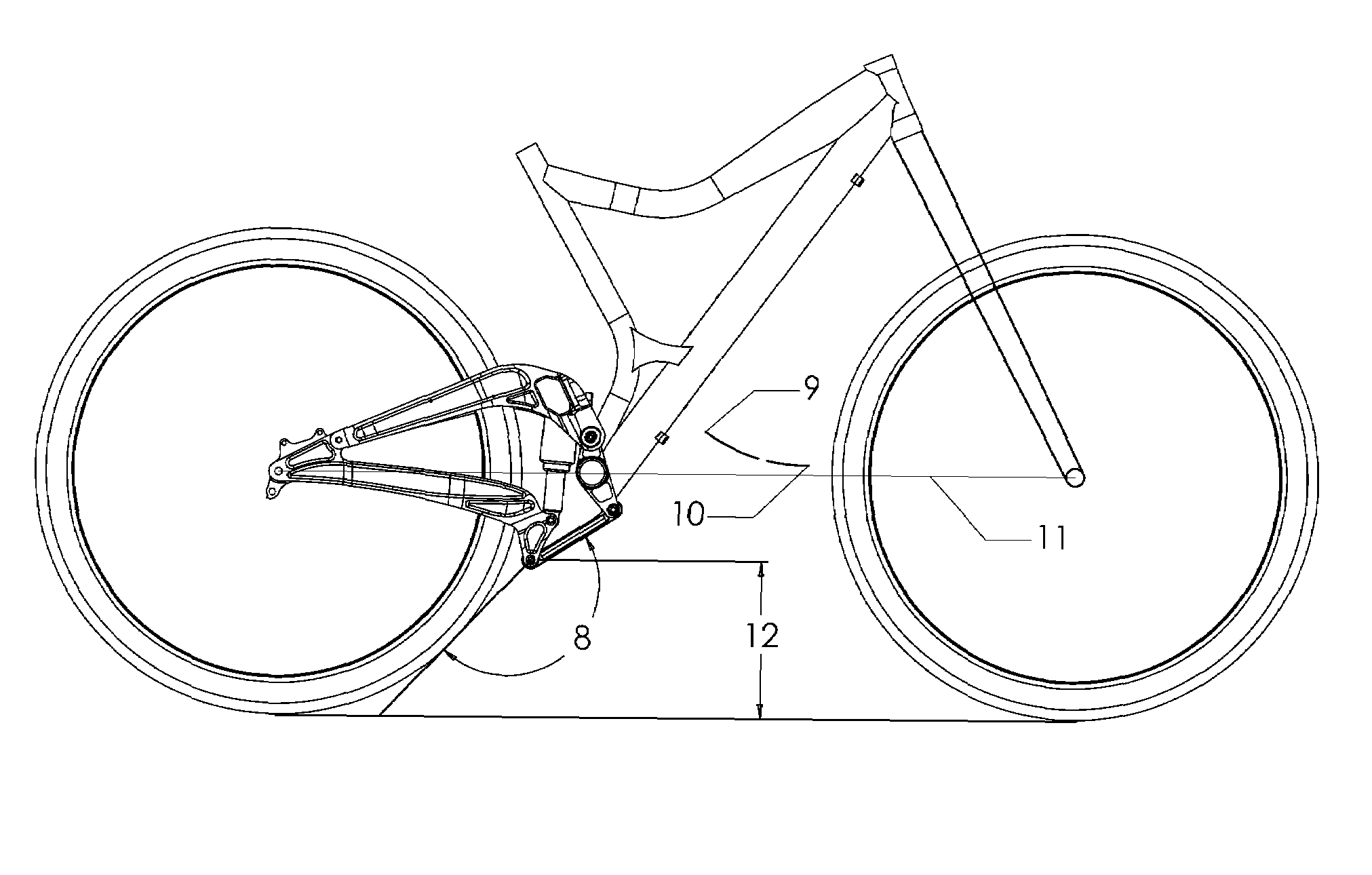Bicycle rear wheel suspension chassis
- Summary
- Abstract
- Description
- Claims
- Application Information
AI Technical Summary
Benefits of technology
Problems solved by technology
Method used
Image
Examples
Embodiment Construction
—PREFERRED EMBODIMENT—FIG. 101, 102, 103, 104, 105
[0066]The system according to a preferred embodiment of the present invention in FIGS. 101, 102, 103, 104, and 105 comprises of a Bicycle Rear Wheel Suspension Chassis.
[0067]FIG. 101 shows a side view of the preferred embodiment of the present invention. The Front Triangle Frame 1 is a welded structure or similar. The Steering Housing 25 pivotally attaches to handlebars, fork and front wheel. The Crank Shaft Housing 20 pivotally attaches to a crank system for pedaling. A rear wheel pivotally attaches to the Rear Axle Location 19. The Link 2 pivotally attaches to the Lower Pivot 2. The Rear Pivot 23 is above and forward from said Rear Axle Location 19. Said Lower Pivot 22 is approximately 50 mm below the geometric center of said Crank Shaft Housing 20. The Upper Pivot 21 is above said Crank Shaft Housing 20. The Rear Shock Absorber 7 is attached to the Swingarm Chassis 24, providing means for suspension spring rate and damping.
[0068]F...
PUM
 Login to View More
Login to View More Abstract
Description
Claims
Application Information
 Login to View More
Login to View More - R&D
- Intellectual Property
- Life Sciences
- Materials
- Tech Scout
- Unparalleled Data Quality
- Higher Quality Content
- 60% Fewer Hallucinations
Browse by: Latest US Patents, China's latest patents, Technical Efficacy Thesaurus, Application Domain, Technology Topic, Popular Technical Reports.
© 2025 PatSnap. All rights reserved.Legal|Privacy policy|Modern Slavery Act Transparency Statement|Sitemap|About US| Contact US: help@patsnap.com



